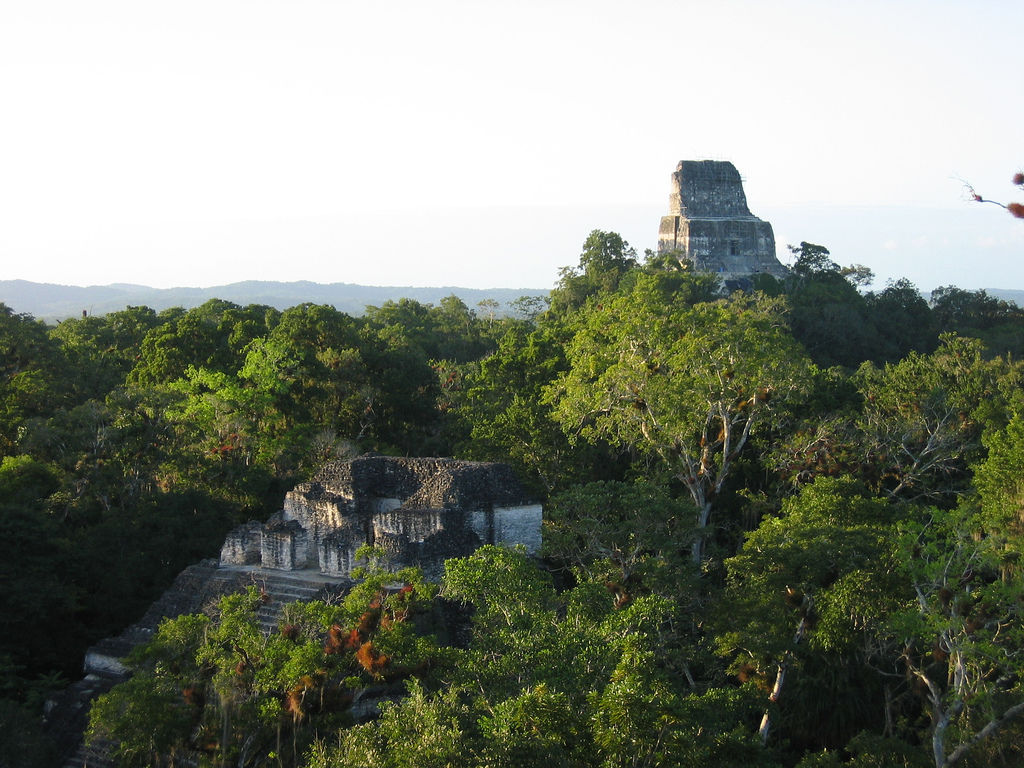
Ruins of Tikal visible above the treetops. Photo © Victoria Reay, licensed Creative Commons Attribution.

Petén
In Guatemala, not only can you take in the ancient Mayan wonders from long before the arrival of the Spanish, you can also visit the Postclassic highland ceremonial sites that greeted the conquistadors upon their arrival in 1524.Most of the Mayan ceremonial sites that were at their cultural zenith during these time periods can be found in the country’s northern Petén region. Among the largest and most sophisticated cities from the Preclassic period is El Mirador, which flourished between 200 B.C. and A.D. 150. No self-respecting archaeology buff would come to Guatemala without visiting the ruins of Tikal at the center of a 575-square-kilometer (222-square-mile) national park protecting the historical site and surrounding rainforest ecosystem. Farther north is the interesting astronomical observatory at Uaxactún. West of Tikal are the sites of Nakum and Yaxhá, the latter of Survivor TV fame.
Real history buffs might want to check out the ceremonial sites found and subjugated by the Spanish at the time of the conquest, thus completing the picture of Guatemala’s pre-Columbian archaeological heritage. When the Spanish arrived in Guatemala, they first secured an alliance with the Kaqchikel, who had their capital in Iximché in Guatemala’s Western Highlands. The Spanish would eventually establish their first capital on the same site. You can visit the restored ruins of Iximché, very conveniently situated just a few kilometers from the Pan-American Highway about an hour from Guatemala City.
With the submission of the Kaqchikels, the Spanish were now free to turn on the K’iche’, whom they met in battle near present- day Quetzaltenango. The K’iche’ invited the Spanish to their mountain fortress at K’umarcaaj, the site of a failed ambush against the European invaders. Today, the largely unrestored ruins are still the site of Mayan rituals and feature a noteworthy underground cave tunnel.
Near the city of Huehuetenango, the inhabitants of the Mam ceremonial site of Zaculeu were done in by starvation after Pedro de Alvarado’s brother laid siege to the city for two months. Northwest of Guatemala City, the ruins of Mixco Viejo were once the Poqomam capital and ceremonial center, falling to Pedro de Alvarado in 1525 after a typically ruthless attack. In addition to temple pyramids, the site has two ball courts decorated with twin serpent sculptures harboring human skulls in their open mouths, a rather unusual embellishment among Postclassic highland sites and further evidence of the Toltec and Aztec influences of the times.
Excerpted from the Fourth Edition of Moon Guatemala.